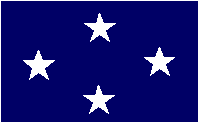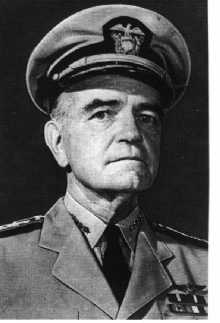


Halsey won the Navy Cross during the First World War while commanding destroyer patrol forces in the Atlantic. After the war he served as a naval attach� in Germany, Norway, Denmark and Sweden.
Halsey, who learnt to fly in 1935, became one of the country's leading exponents of naval air power. He commanded the aircraft carrier Saratoga for two years before becoming head of the Pensacola Naval Air Station in 1937. The following year he was given the responsibility of training air squadrons for the new carriers, Enterprise and Yorktown. In June 1940 he was promoted to vice admiral.
In January 1941, the Commander in Chief of the Japanese Combined Fleet, Admiral Isoruku Yamamoto began planning for a surprise attack on the US Navy. Yamamoto feared that he did not have the resources to win a long war against the United States. He therefore advocated a surprise attack that would destroy the US Fleet in one crushing blow.
On Sunday, 7th December, 1941, 105 high-level bombers, 135 dive-bombers and 81 fighter aircraft attacked the the US Fleet at Pearl Harbor. In their first attack the Japanese sunk the Arizona, Oklahoma, West Virginia and California. The second attack, launched 45 minutes later, hampered by smoke, created less damage.
Fortunately for Halsey he was at sea at the time of the Japanese attack. Serving under Admiral Chester Nimitz Halsey led the task force that attacked Japanese positions in the Gilbert Islands. In April 1943 he helped organized the air attacks on Tokyo.
A nervous skin disease meant that Halsey missed the battle of Midway and Raymond Spruance led the task force that inflicted considerable damage on the Japanese Navy.
Promoted to admiral in November, 1942, Halsey took control of naval operations during the Guadalcana campaign (12th-13th November, 1942) and sunk two Japanese battleships, two destroyers and six transport ships for the loss of two cruisers and four destroyers.
The following year he took command of the South Pacific Force. Working closely with General Douglas MacArthur Halsey developed what became known as his island hopping tactics. This strategy involved amphibious landings on vulnerable islands, therefore bypassing Japanese troop concentrations on fortified islands. This had the advantage of avoiding frontal assaults and thus reducing the number of American casualties.
In the Leyte Gulf campaign Halsey had the task of supporting the landing of troops and to destroy the main Japanese fleet. On 24th October 1944 Halsey fell into a Japanese trap when he headed north with all 64 ships to attack Admiral Jisaburo Ozawa . He left the San Bernardino Strait unprotected and only the actions of Vice-Admiral Thomas Kinkaid and the 7th Fleet prevented a military disaster.
Halsey's fleet were twice hit by typhoons in December 1944 and June 1945 and this led to the loss of several ships and many lives. At the subsequent enquiry he was criticized for taking inappropriate action in both cases.
At the end of the Pacific War Halsey's flagship, Missouri, was used for the signing of the Japanese surrender on 2nd September 1945. Three months later Halsey was promoted to admiral of the fleet.
After retiring from the US Navy in April 1947, Halsey was a director of several large companies. William Halsey died in Pasadina, California on 16th August 1959.
Adm William Halsey Quotes I never trust a fighting man who doesnt smoke or drink. Adm William Halsey
If you want to go anywhere in modern war, in the air, on the sea, on the land, you must have command of the air. Adm William Halsey
There are no extraordinary men... just extraordinary circumstances that ordinary men are forced to deal with. Adm William Halsey
Halsey, William Frederick, Jr. (1882-1959), was one of the leading United States naval commanders during World War II. General Douglas MacArthur called Halsey "the greatest fighting admiral" of World War II.
Halsey became vice-admiral in command of a Pacific carrier division in 1940. He commanded this division in attacks on the Gilbert and Marshall Islands and on Wake Island and Marcus Island in February, 1942. Later in 1942, he took command of U. S. naval forces in the South Pacific. In a series of bloody battles, his forces defeated the Japanese in the Solomon Islands. This victory enabled American land forces to occupy the entire island chain. During this period, Halsey also supported the opening offensives of General MacArthur in the Southwest Pacific. Halsey took command of the Third Fleet on June 15, 1944. In the Battle of Leyte Gulf in October, 1944, Halsey's fleet and Admiral Thomas Kincaid's Seventh Fleet smashed the Japanese Navy and virtually eliminated it from the war.
The Japanese later signed the surrender on Halsey's flagship, the battleship Missouri . Halsey was born in Elizabeth, N. J., and was graduated from the U. S. Naval Academy in 1904.
Halsey's 1899 application for admission to the University of Virginia. (Courtesy Alderman Library, University of Virginia.)
Halsey standing in front of the Rotunda at the University of Virginia. The Rotunda is the center of Thomas Jefferson's plan for the University of Virginia. (Photograph courtesy Alderman Library, University of Virginia.)